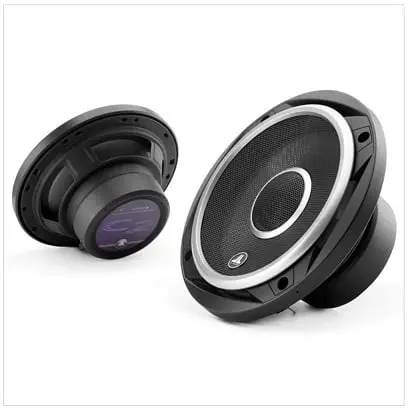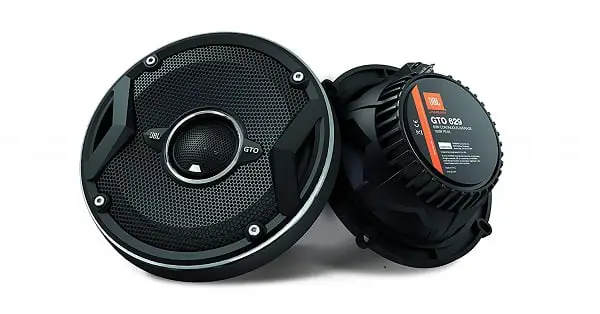Driving down a highway with loud music hyping mood is probably one of the best feelings. It’s a foolproof way to calm down your restless mind or confused heart. That’s why I always care about sound quality and so, buying the right equipment is my number one priority.
Car speakers are not a new thing that lets you set that engaging mood. One very popular variant is the component speakers. If you’re someone who is in need of a compatible speaker, I’ve got some great news to tell you. Keep on Reading!

Table of Contents
Complete Guide of Component Speakers: What to Know Before Buying One!
If you want to start fresh with your car’s sound system, then component speakers can be an ideal choice. Of course, the decision isn’t so easy to take in a few minutes or assurances. You need to know the whole truth about it.
This is why I’m taking the privilege to provide you a complete guide of Component Speakers to make the purchase decision easier. Trust me, researching and finding out prior to spending money is worth the hassle.
What are Component Speakers?
Component speakers are actually the big boss of full-range ones. Full-range speakers are quite common and people who do not know about them are probably living under a rock. These are, however, pretty low in sound quality and also price range.
But when you want a better sound experience and don’t mind spending extra few bucks, component speakers enter the chat. For optimal sound quality, car owners are considering these as the most preferable choice.
Unlike the full-range variant, component speakers use multiple parts. This is why it’s named that. Being different parts combined rather than one comprehensive speaker, the overall syncing gives better performance.
The parts that work for these speakers are woofers, tweeters and external crossovers. All the parts work together and give a better depth for sound boosting. Because of the mechanical separation of tweeter and woofer, frequencies are louder plus clearer.
How Component Speakers Work?
To understand better the functionality of component speakers, let’s talk about coaxial ones first. Coaxial speakers are manufactured with woofer and tweeter combination.
So, with the single speaker opening, you’ll experience a compromise of separate frequencies. As a result, the convenience of one-piece speakers brings less sound.
In component speakers, the functionality is planned to get rid of this disadvantage. It keeps a crossover between two divers. And so, the job of reading better frequency works fantastically.
Its Mechanism has Following Working Parts:
The Upper Part:
This is the area managed by tweeters. They are introduced to deal with high range delicacies. The habit of high frequencies is that it always travels to lower ones. So, the tweeters stay quite close to ear level.
However, it also needs to maintain a closer relationship with woofers. So that the frequencies working differently do travel to your ears at the same time.
The Lower Part:
The resonant lower frequencies of a sound system need a foundation for detailed highs. This is the solid nominee for those smaller frequencies. It’s known as woofers and stays at the car’s factory locations. It should not have any physical interactions with tweeters.
Middle Section:
There needs to be a manager or traffic cop like element that will decide whether a frequency goes up to tweeter or down into woofers. In the component speakers, this manager is called external crossovers.
These are basically the direction provider for different types of frequencies. If the frequency is more than a decided point, it routes toward tweeters. With the lower frequencies, crossover sends them to woofers.
How to Install Component Speakers (Step-By-Step Instructions).
There are multiple audio components that need attention for this sound system installation. That’s why you’ll have to pay enough attention to provide proper control and flexibility.
So, get prepared to invest a good amount of time and effort. You don’t want to end up being failed in the process just because of rushing and caring less.
Once you get the tools listed below, jump right for installation process provided.
- Box.
- Good pair of gloves.
- Tape for electrical components.
- Wire for speakers.
- Kits for wiring.
- Multiple screwdrivers.
Woofer Installation:
The installation should not affect any mechanism of your car, make sure of that before starting. Next, move on to kick panels, dash or door, wherever you want to install the woofer. You may also want to keep it in the factory speaker location.
Using the easy fit option, complete the modification process. You can drill a hole for screws and follow up with cutting small door panel’s file, metal or press-board parts. Make sure the fit is correct without any possibility of a problem arising.
Tweeter Installation:
Time to focus on the tweeters. You need to put it in the sail panels, door or dash area. It's okay to proceed without any modification unless there’s a mounted factory tweeter area. The changes complexly depend on the attaching way.
Make a simple hole inside the door panel of the car. You need to keep it on the same level as interior panel. Now move to an area that’s twelve inches far from woofer. This is where you’ll mount the tweeter.
This distance is necessary for keeping frequencies reaching your ears at the same time.
Crossover installation:
Figure out an easily accessible spot inside your car. This is where you’ll place the crossover. Usually, it stays between the amp and receiver. Make sure the attached portion is steel-made.
Using screws, now you should attach the crossover. Make sure to shake it and see if there’s any movement. Use extra screws to fix it in that case.
Start wiring the end line of cable into component. The other wire end goes straight to battery. Crossover usually needs pretty less energy.
Near the metal area of your car, simply mount a bolt. Follow bolting another screw right above the first one. Now simply attach the first bolt’s largest amp to ground. The second one will connect to electronic crossover.
Connect the two leads after tapping. These are called turn-on lead and signal. Now joint the component with receiver port using a patch cable. You can use electric tape for safe wrapping. That’s it!
Finding a Good Deal?
After being introduced to so many parts of this sound system, it’s time to have a look at some options. So, what are the best component car speakers and how do you get a perfect one for your car?
For buying considerations, I think the most important parts you need to focus on are woofer and tweeter.
You should ensure that the woofer is completed with tough and flexible elements. It should have a good capacity for resonance from the surround. So that there’s no muddiness or distortion while listening at a higher volume.
Tweeters are more like a dome style stature that seems pretty tiny. These need to tackle very high-frequency motion. So, overheating can be a crucial point here. Materials that are heat resistance should be your first priorities in this case. Ferrofluid cooling can be an ideal resistor as well.
Also, remember that you get what you’re paying for. So, don’t even think about enjoying optimal quality by spending a handful of bucks. Keep your budget practical and finding a good deal online will seem easier.
Editor’s Recommendations of Best Component Car Speakers:
JBL GTO609C Premium 6.5-Inch Component Speaker System.
The robustly designed component speaker with extremely high-fidelity for Bass & sound quality. An excellent choice for people who are looking for automobile audio up-gradation.
Features:
- The most innovative GTO series model.
- PlusOne technology lined up with carbon-injected cones.
- Better air displacing and bass handling capabilities.
- UniPivot Tweeters for controlled sound direction.
- Incredibly reasonable with below hundred dollars price tag.
JL Audio C2-650 2-Way Component Speaker System.
The perfect pick that allows you to tailor your preferable sound balance and quality. Super user-friendly crossover system that makes long drives a soundful experience.
Features:
- Flexibility to adjust the crossover with advanced modification available.
- 3-positional tweeter levels for crossover.
- Mica-filled polypropylene cone cushioned woofer.
- Included symmetrical roll spider & voice coil.
- 200 watts peak power per pair.
Conclusion
There’s no denying the fact that component speakers are probably the best sound system for any car or vehicle. In terms of sound quality, it is till now unbeatable compared to any other technology, such as full-range speakers.
Of course, with decision of buying a component speakers comes the hassle of spending more. These are quite expensive, but also there are reasonable options.
To get a good music listening experience, you should upgrade to component speakers. With customization opportunities & fantastic soundscape, these are very worthy as a deal.
Hopefully, this Guide of Component Speakers has sorted your confusion well. However, if there are any queries or thoughts you want to share, let me know. I’ll be glad to hear from you. See you soon on another fun topic!
